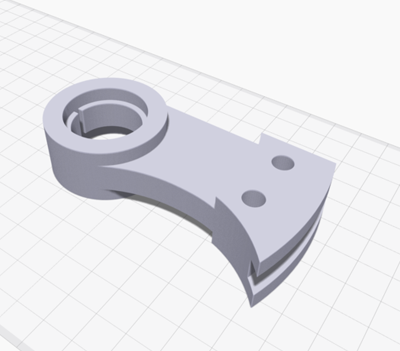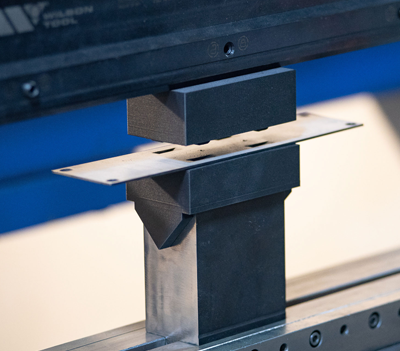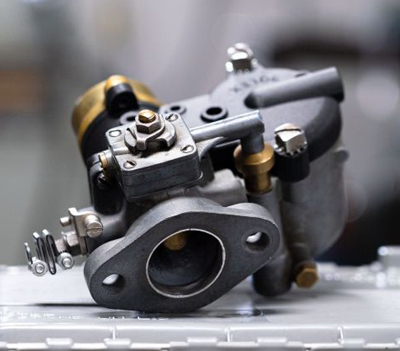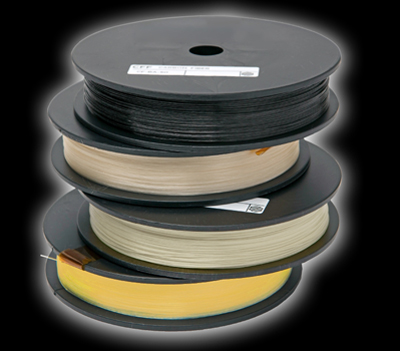
The company
ASS Maschinenbau has been developing intelligent solutions for automation and robotics for over 40 years. From gripper parts from the robot hand kit to end-of-arm tooling (EOAT) and complete automation solutions for the automotive and plastics industries. Sustainability is a living process at the Overath-based company. The innovative company is a partner of PRIMAKLIMA eV and has already reduced its total CO² footprint by 66%.
The challenge
As a company with a high level of vertical integration, most components are manufactured in-house at ASS Maschinenbau. Typically, the solutions for the customer are located in the standard parts area of the robot hand kit, as these are
are easiest and most cost-effective to implement.
However, ASS solutions include many gripping solutions that have to be developed, designed and manufactured specifically for the customer. different contours required to move components out of or into an injection molding machine or gripper jaws that perform certain pick-and-place tasks in presses.
Over 90 of these customized applications were realized from aluminum.
The high variety of variants and the complex geometries have long been a challenge in production.
As an alternative, ASS Maschinenbau has been using the SLS process for laser-sintered parts for many years. This process also produces 3D-printed components for final assembly. For components and structures with higher mechanical strength, a further solution was needed.

“During our evaluation, we were unable to find a comparable 3D printer on the market that delivered this level of maturity and with this promise of stability. Everything we promised ourselves has come true.”
– Thilo Puchert, Head of Automation
Printed components with the strength of aluminum
Initially, there were concerns and rumors that 3D printed components were not suitable for industrial use – in terms of strength, quality, cost, reliability and durability.
But the individual components that were made of aluminum in the past now come almost 100% from the industrial Markforged 3D printer at ASS.
The fact that Markforged technology can produce components that exceed the strength of aluminum was initially questioned and then put to the test.
The project began completely risk-free with individual sample components from Mark3D that were tested under real conditions.
For example, a set of gripper jaws was tested, which had to grip a screw.
After about 300,000 cycles, no marks were found on the jaws.
Subsequently, additional components were obtained from Mark3D via a 3D printing service provider and tested in practice.
Current state of the art
After being internally convinced of the technology, the company defined this technology as the current state of the art and began equipping certain gripping solutions with 3D printed jaws.
Gradually, more and more applications were printed, such as mounting brackets or devices that were previously machined mechanically.



Fast learning curve in construction
Because the company has been using the powder bed process for decades, the new technology was established very quickly and there was already a good understanding of additive design.
The design freedom is being increasingly exploited and corresponding know-how in the design of components with continuous carbon fibers is being built up. The components are now no longer designed with production in mind, but above all with function optimisation in mind.
A proprietary product line with 3D printed components
All gripping solutions that cannot be used with the standard modular system are now largely equipped with 3D printed jaws.
Overall, the printed grippers save around a third of the weight compared to conventionally manufactured grippers.
The customer receives the parallel jaw gripper PGR combined with 3D printed jaws that are individually adapted to the customer's component – at a fixed price.
The customer simply needs to send a CAD file of the component to be gripped. ASS then generates the appropriate gripper jaws.
This is how injection molding is complemented by industrial 3D printing
This gripper is then delivered to the customer within 3-6 days. Previously, customers purchased the gripper and then had the gripper jaws manufactured in-house by the equipment manufacturing department. For the customer, this represents a complete, worry-free solution from ASS.
At ASS, printed components contribute to almost all technical solutions and are thus integrated into almost all of them. To date, nearly 1,300 customer-specific applications that were previously manufactured mechanically have been successfully printed.
Customer projects are realized using 3D printing.
A crucial project achieved company-wide acceptance. The request of an existing customer could not be realized with the standard solutions due to weight restrictions in the payload of the robot, as the gripper including aluminum profiles would have weighed around 6.5 kg. In the end, the gripper was a compact part, with all functional surfaces in the design individually adapted to the customer's requirements and then printed.
After another iteration loop, the final gripper had a total weight of 2.1 kg, compared to the original weight of 6.5 kg.

The EP coating (elastomeric polyurethane coating)
Many of the components are coated with an EP coating. This highly abrasion- and wear-resistant coating is universally applicable and available in two Shore hardnesses and colors: Shore A hardness 90 in blue and Shore A hardness 60 in black. This coating is applied in-house using a paint-like process when particularly abrasive or sensitive component surfaces must be handled. A laboratory test certificate for paint compatibility (LABS) is available for the blue version.


Fiber-reinforced 3D printing
The material behind these high-strength components is Markforged ONYX. Onyx is a polyamide 6 with approximately 15 % short carbon fibers.
The secret, however, is the continuous carbon fiber.
At ASS, grippers and applications are reinforced with continuous carbon fiber (long fiber) via a second nozzle in the print head. The long fiber is embedded in the component, thus distributing the loads across the entire surface.
These strengths go far beyond what we know from the areas of GRP and CFRP.
Aluminum can largely be replaced as a material.
The future
After ASS Maschinenbau has been using the industrial 3D printer intensively for some time, it is intended to be used to ever greater capacity.
The recently developed new product line will also ensure this in the future:
MicroLIGHT – the new ultra-light MicroGripper system.
Ultra-lightweight construction, ease of assembly, maximum flexibility, and compatibility in connection and application options were the focus during the development of the new, ultra-lightweight microLIGHT gripping system. Grippers from the microLight system can be easily connected to all common types of industrial robots, such as linear systems, articulated-arm robots, or cobots. The ASS robot hand kit offers cross-system connection options to enable economical and simple integration of the robot hand (EOAT). The 3D-printed components made of high-strength and durable material reinforced with continuous fibers provide the necessary stability and lightness. This means that even smaller injection molding systems can now be operated where this was previously impossible.
Compatible, flexible and scalable
Using microLIGHT profiles and clamps, additional mechatronic gripping components from the Micro series can be easily combined to create an ultralight gripper. The journey with additive manufacturing is far from over at Ass. They are on a development path, and there's no end in sight.

Pictured: ASS Maschinenbau Managing Director Reinhold Ziewers (left), Thilo Puchert, David Schlawer from Mark3D and Wolfgang Breu (right) with a 3D printed product innovation.

Would you like a live demo, have questions or need a quote for a Markforged 3D printer?
Contact us now!
![]() Mark3D GmbH
Mark3D GmbH
Rodenbacher Straße 15
35708 Haiger
Phone: 07361 63396 00
E-mail: markforged@mark3d.de
Global market leaders rely on Markforged 3D printers
To contact us, please fill out our secure form.









